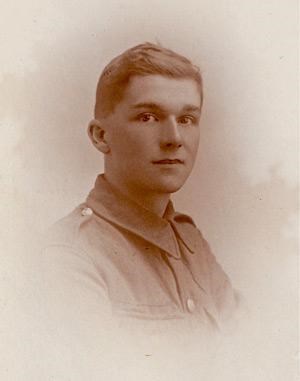Mike Reynolds and his wife Delors were given a rare piece of insight recently when Mike’s sister Margaret sent him a letter from Britain. The letter contained an excerpt from an old news article in which Mike’s father Private John Reynolds had written to his mother about surviving the sinking of HMHS Britannic during World War 1.
In 2006, Mike and Delors moved to Powell River for their retirement. Mike was a gardener and Delors ran a home-based daycare. As a youngster Mike had never been told about his father’s military service. The letter from Mike’s sister came as a surprise.
John served in the Royal Army Medical Corps from 1914 to 1920. He died in 1968, and when asked about the letter, Mike said “He never told us about this.” It’s a familiar story for many veterans’ families where a disconnect exists between veterans and people close to them.
The Britannic was built and modelled after the RMS Titanic to be a bigger and safer model to the cruise liner that sank four years prior. She was first constructed as a cruise liner in 1914 before she was co-opted to become the world’s largest medical ship in 1915. The Britannic and John made six voyages across the Mediterranean saving and evacuating hundreds of soldiers and civilians before she sank in 1916 when she struck a German sea mine.
In the original letter to his mother published in the Sheffield Daily Telegraph on December 5, 1916, John described the sinking of the ship as something he would never wish to go through again. However, in a follow-up letter to a friend published in the same paper he goes into more detail: “The [life]boat I was in was crushed to pieces and a lot of us had to jump into the water. Talk about a narrow escape.”
The Britannic weighed 50,000 tons and was approximately 880 feet long. She was the largest ship to have ever served in World War 1. The sinking of The Britannic only claimed 30 of the 1,096 lives aboard, a low mortality rate due mostly to the addition of higher safety standards that were put in place after the sinking of The Titanic.
November was the centennial commemoration of World War 1. When asked about his thoughts on receiving the letter almost 100 years after it was written, Mike replied, “It came shortly before November 11, so it was a memory of the war. We seemed to be more aware of what was happening.”



